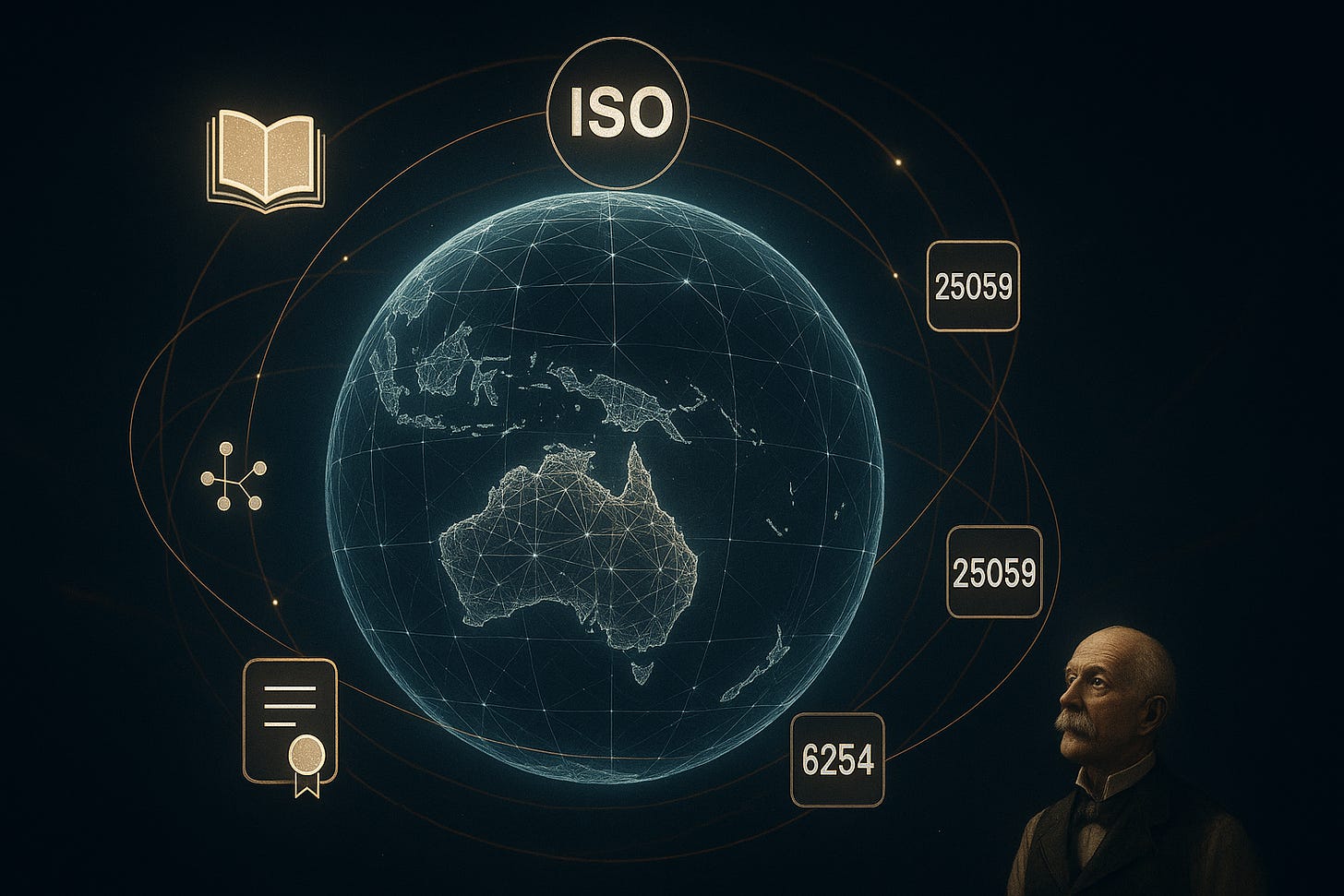Watching the Shift
How JTC 1/SC 42 is Redefining AI Governance
I wasn’t in the room this time, but I was watching from afar, following the conversations and closing reports as they were released. The October 2025 ISO/IEC JTC 1/SC 42 plenary in Ultimo has only just concluded, making this a timely moment to take stock of where AI standardization now stands. What emerged from this session was the unmistakable consolidation of a new center of gravity for AI standardization.
JTC 1/SC 42 has become a critical component of the international standards ecosystem: a committee whose outputs now underpin the governance, assurance, and ethical frameworks that every other technical committee must take into account.
For those of us in ISO/TC 46/SC 11 (Archives and Records Management), the developments are deeply consequential. From a distance, the pattern was clear. SC 42 is defining the infrastructure for trustworthy AI in much the same way SC 11 once defined the principles of trustworthy recordkeeping. Authenticity, accountability, provenance, and lifecycle control are being re-articulated in the vocabulary of AI governance.
The recent publication of ISO/IEC TS 6254:2025 on Explainability and Interpretability of Machine Learning and AI Systems reinforces that trajectory. It draws a line between algorithmic transparency and the documentary evidence frameworks that have always anchored archival science.
“The publication of ISO/IEC TS 6254:2025 gives tangible form to a shared principle: if AI decisions can be explained, they can be documented, traced, and preserved. For TC 46/SC 11, this is where archival logic meets algorithmic transparency.”
Three horizontal deliverables from SC 42 now extend that bridge between AI and information governance:
ISO/IEC DIS 25059 (Edition 2) on quality models for AI systems;
ISO/IEC DTS 22443 on societal and ethical considerations;
ISO/IEC DIS 42105 on human oversight of AI systems.
These standards are not abstractions. They form the connective framework through which archival and records management communities can engage with AI governance, defining the conditions for digital trust in the AI era.
Continue reading with a MetaArchivist subscription
(Subscribers gain access to the full SC 42 plenary analysis, working group updates, and a breakdown of what each horizontal deliverable means for digital preservation, provenance, and trustworthy AI governance.)
Inside the Full Report
Section 1: Executive Summary – How SC 42’s horizontal frameworks are reshaping the global AI standards landscape.
Section 2: Foundational and Conceptual Work (WG 1) – Revisions to 22989 and 23053 and the semantics of “agentic AI.”
Section 3: Data Ecosystem (WG 2) – Metadata, provenance, and the audit trail of AI.
Section 4: Trustworthiness and Assurance (WG 3–5) – Including the newly published TS 6254:2025 on explainability.
Section 5: Sectoral Integration (Healthcare, Finance, NLP) – Where AI governance meets real-world regulation.
Section 6: Horizontal Deliverables and the New Governance Model – 25059, 22443, 42105 as the architecture for coherence across ISO and IEC.
Section 7: Implications for TC 46/SC 11 – Records integrity, metadata provenance, and human oversight in AI-supported information systems.
Section 8: Looking Ahead to Singapore 2026 – The next phase of horizontalization and its relevance for information and documentation standards.
Keep reading with a 7-day free trial
Subscribe to Andrew Potter to keep reading this post and get 7 days of free access to the full post archives.


